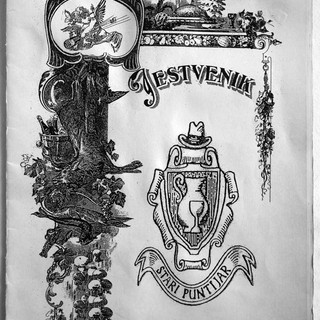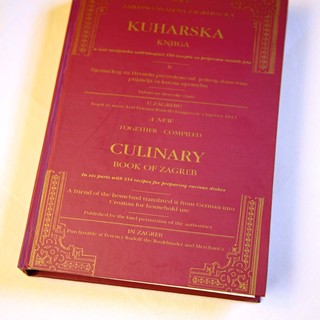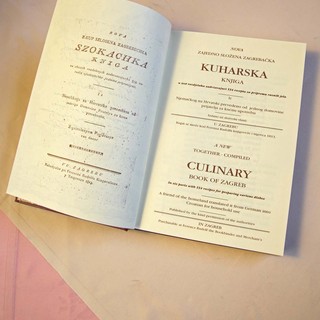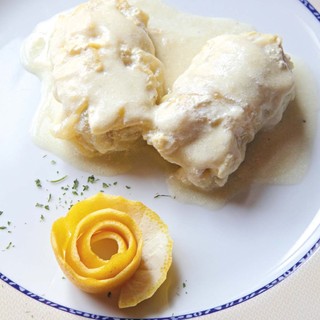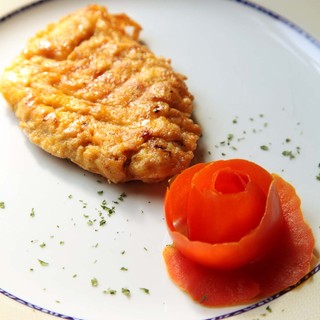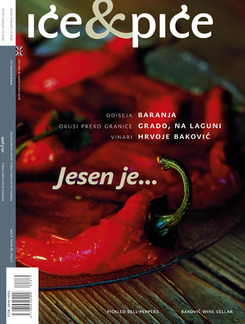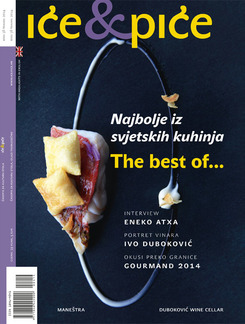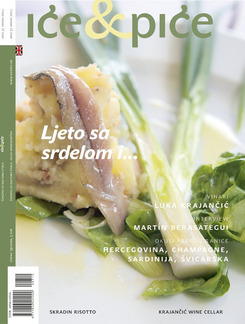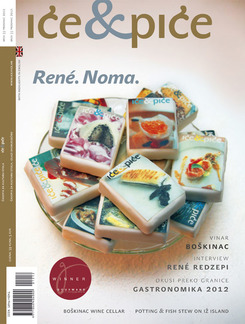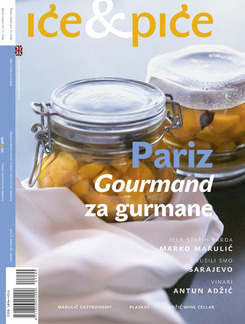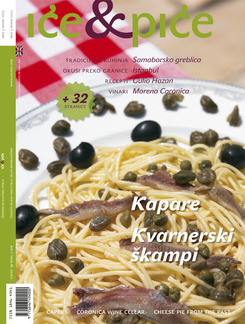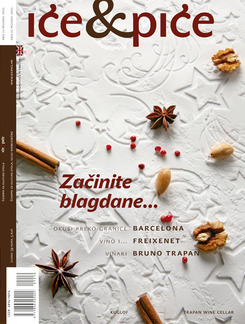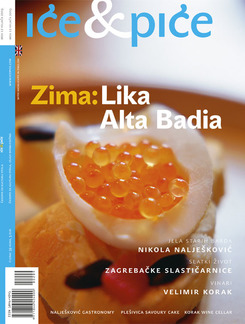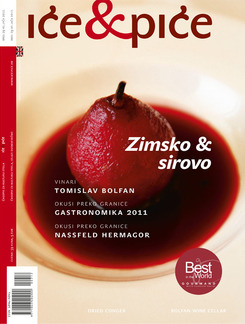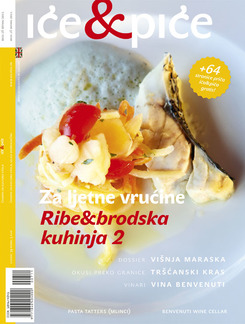This year is, almost inaudibly, the round-number anniversary of the first cookery book printed in Croatian. This is an occasion not likely to be featured in the media and no one is going to put up anybody a monument or devote a conference or a documentary film to them. Instead of a memorial plaque, on the occasion of the bicentenary of the publication of the first Croatian cookery book, we shall dedicate a part of the story about traditional cooking, burgher cooking and taste from the beginning of the 19th century. Rural, vernacular cooking has almost everywhere become one of the more vocal measures of the gastronomic counter-reformation, while the burgher has remained apparently neglected. Probably it is considered more subject to foreign influences that blur the anyway indistinct concept of authentic cooking. But both the rural and the city cuisine are built into traditional cooking, in which oral and written records of food preparation and consumption are interwoven. Throughout Europe, old recipes are being dug up, local and authentic recipes are being cultivated, the experience of eating is being sought together with a story of the good things that were eaten once upon a time. A dietary war against globalisation and its uniform, industrial food is being waged with gran’s cooking, slow food and nostalgia, the gang all around the table… Lost tastes are sought in food-spattered old cookery books and dishevelled kitchen notebooks. There’s no believing clean and orderly cook books, because they have probably never seen a kitchen. But reprints are not very rare, nor is the publication of family culinary histories, in which great-grandmothers become for the nonce grandmothers. Selective social memory is hosted with Sunday lunches and grand menus, handily consigning to oblivion the greasy roux, the flour soups and Lenten goulashes. Today a romanticised, one-time refined cuisine is of a bourgeois character, at once sophisticated and pragmatic. Open to the novelties of European cooking and the aromas of exotic species. But at the same time completely dependent on the produce market that offers the products of the surrounding villages. The countryside feeds the city, which in return gives it the knowledge that the lasses acquired when in service in burgher families.
And so the recipes were part of a two-way traffic, travelling at the speed of backbiting.
We can credit the cookbook of Ivan Birling, reprinted a few years back, Nova z-skup szlozena zagrebecha szokachka kniga, with some of the revived interest and enthusiasm. Signing himself friend of the homeland, this distinguished university teacher and priest published the book in Zagreb in 1813, intending it not for the professional sockach or cook, who already had greater knowledge, but for the daughter of the house, the girl whose tasks in the family home included cooking. Like other cookbooks Szokachka kniga, published in 1813, perhaps did not offer a real image of the food preferences of old Zagreb, but it is an invaluable document of the tastes and flavours of the early 19th century.
History provides only a few manuscripts of epistles and prayers and some terse bibliographical details about the author, canon of Zagreb, cantor and censor and praepositor in Čazma. Ivan Birling (1775–1852) was praised in his obituaries as a great confessor, a modest and caring priest, but nothing was said of his love for food. His motivations for writing the book, except for those he mentions himself in the foreword, are unknown. We cannot know whether he started to write the cookery book, which he did not think it suitable to place his real name upon, to gratify his love of food or to compensate for the modesty of his actual bill of fare. He left no other testimony to his love of food except this book, which in six sections, has as many as 554 recipes. Birling admits that he was not the author of the recipes, as was not Gjuro Deželić, author of the second Croatian recipe book, who admitted that he was unskilled in the kitchen, and said that he had taken some of the recipes from manuscript sources, and some from an unnamed Viennese book, which he said had been reissued more than 30 times. It is hypothesised that this refers to the famed Baroque cookery book with the flowery name of Freiwillig Aufgesprungener Granatapfel Des Christlichen Samariters. Even though the first edition of 1699 was not signed, later editions, and the Split Pomegranate was published until the end of the 19th century, confirm that the author was Eleonora Maria Rosalia, Duchess of Eggenberg. Like our Birling, the duchess too considered it pas comme il faut to link her name with anything quite as vulgar as a cookery book. The enterprise of writing a cookery book in Croatian in the early 19th century was primarily a philological problem. In the brief and sober foreword, Birling referred to the use of German in the kitchen. It was not that there were no Croatian words, he states, rather, that German was there for the better understanding. A culinary culture was anyway bilingual, whatever the region, and Croatian cooking language was inextricably linked with German and/or Italian. We might say that it is not at all surprising there was no cookery book in Croatian before the 19th century, since it was not necessary. Following its models, Szokachka knjiga remained within the framework of a cooking manual. Birling did dwell on any cooking philosophy or encomium upon the pleasure of eating, which was anyway on the boundaries of the venial, but without either comment or judgement, wrote out recipes that represented a cross-section of the cooking of central Europe of the time. There are recipes here like beef done in Bavarian, English, Dutch, Muscovy and Italian style, French and Bohemian soup, Roman egg slices. But along with refined dishes, we can also find recipes for roux and bean soup, modest and sparing vernacular dishes. All the luxury of bourgeois cooking at the beginning of the 19th century, redolent of cinnamon, saffron, ginger, nutmeg and allspice, is best conjured up by the list of chapters.
A luxury selection of recipes in constant collusion with European kitchens and domestic dishes, such as Croatian pie made out of tatters is a testament to a gourmet past the scent of which just occasionally arises from a pot in which some never-to-be-completed traditional cuisine is simmering. We can leave recipes with crayfish and turtles to the past, their text belongs among the album of past cooking, and try some Birling dish for today.
The reconstruction of old tastes can still surprise us and explain both the past and the present of Croatian cuisine.
Puntijar
We have to credit the reprint of Birling’s cookery book to Zlatko Puntijar, known Zagreb restaurateur and lover of old cook-books and recipes. The hospitality family history of the Puntijars is just twenty five years younger than Birling’s book, and who knows, perhaps was used in the kitchen of the tavern that the great-grandfather of today’s owner had in Gračani. From May to the end of this year, the menus in Stari Puntijar will be coloured by Sokachka knjiga. Discreetly updated and adjusted to the tastes of today, uncommon and familiar, the old dishes will once again gladden and reveal the truth about the good things that people ate once upon a time.

